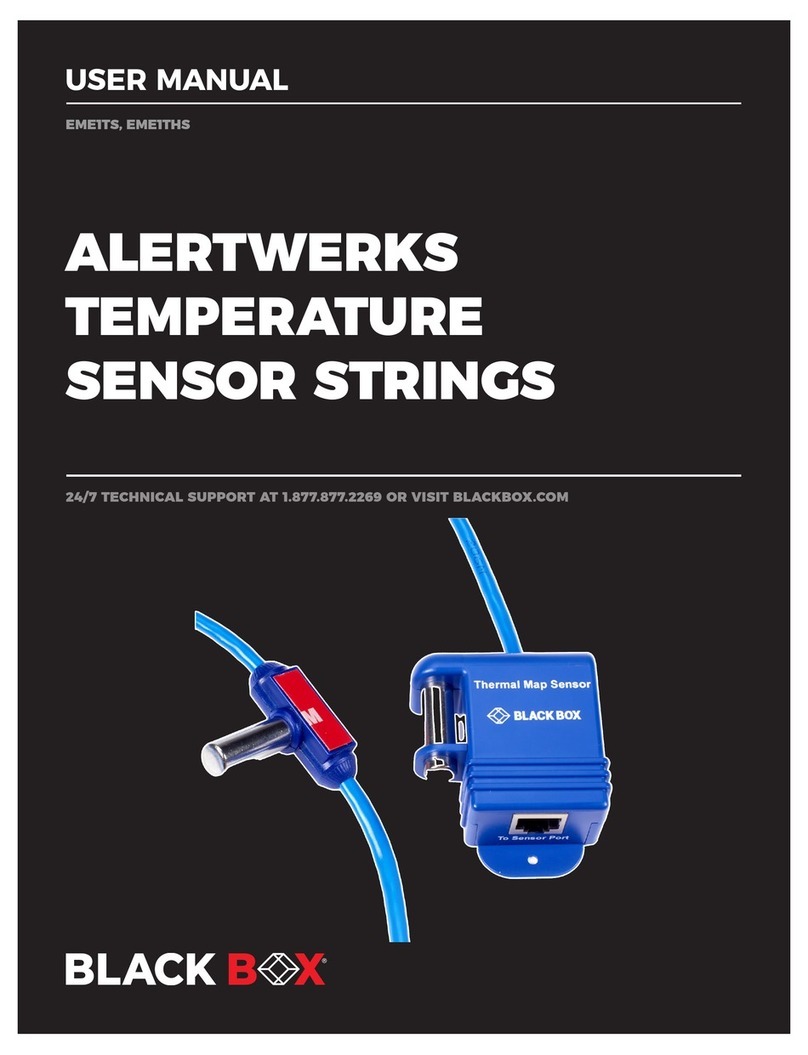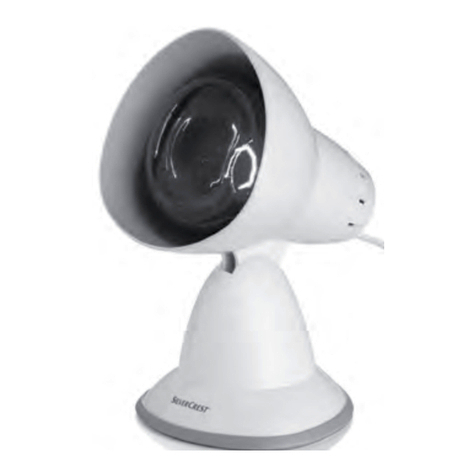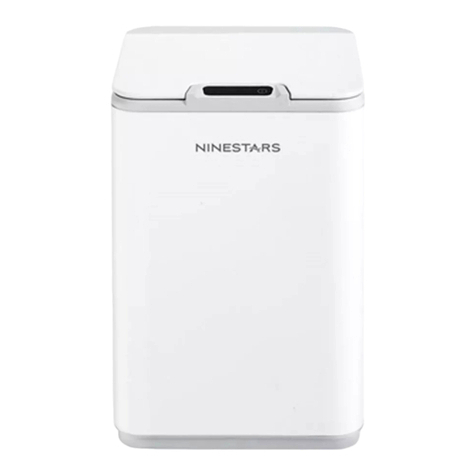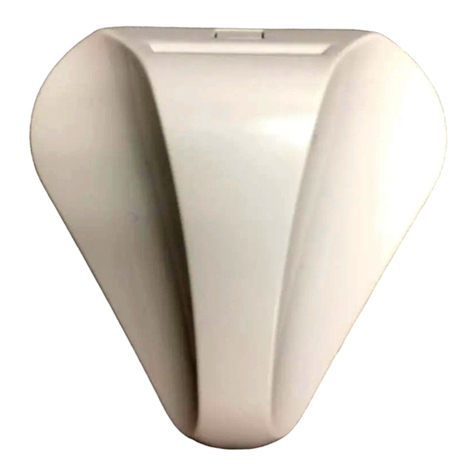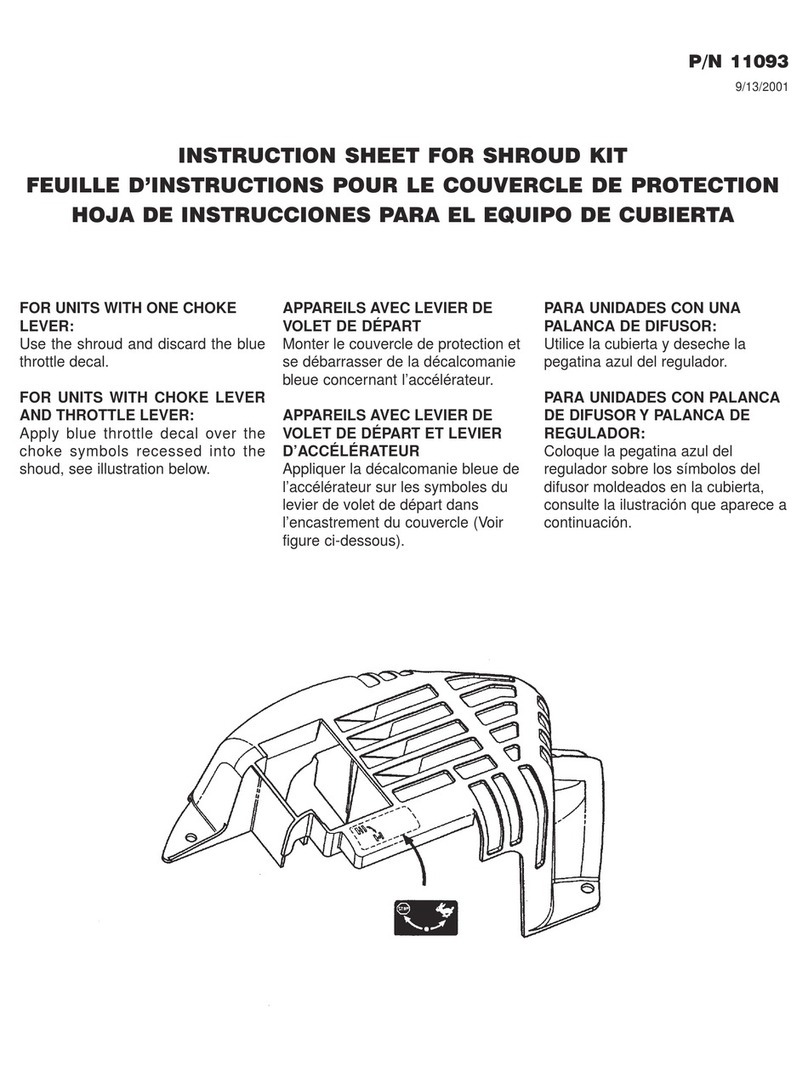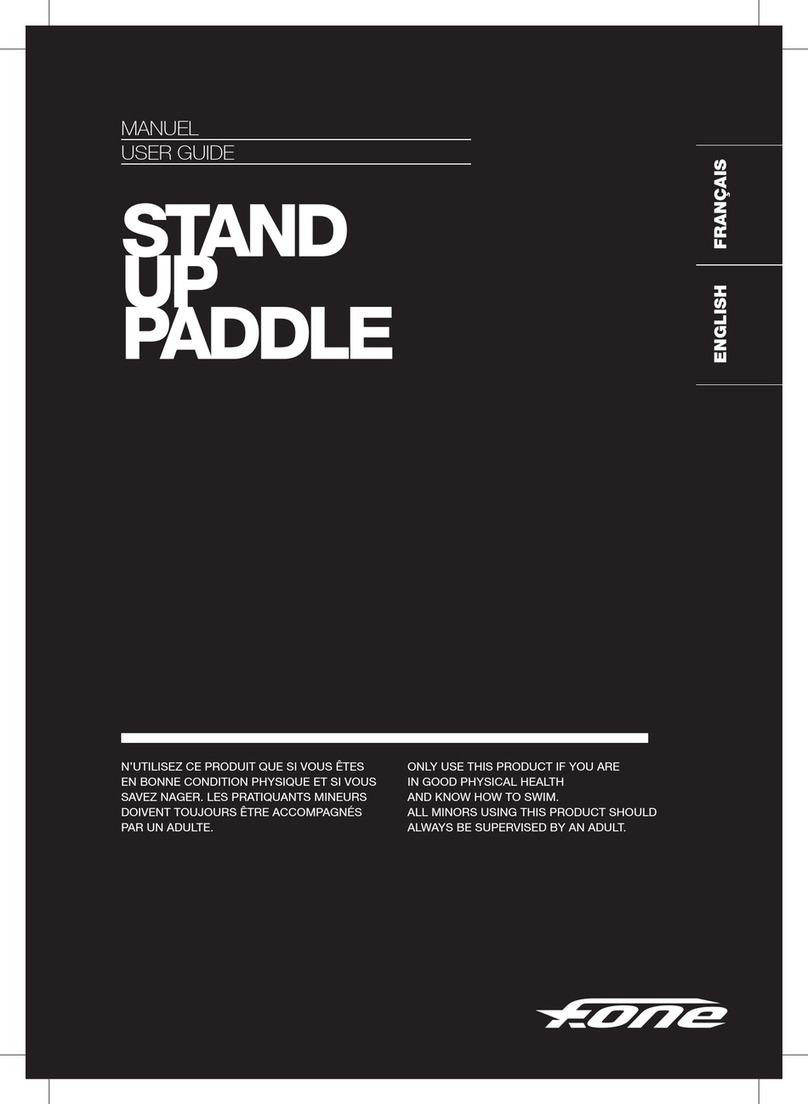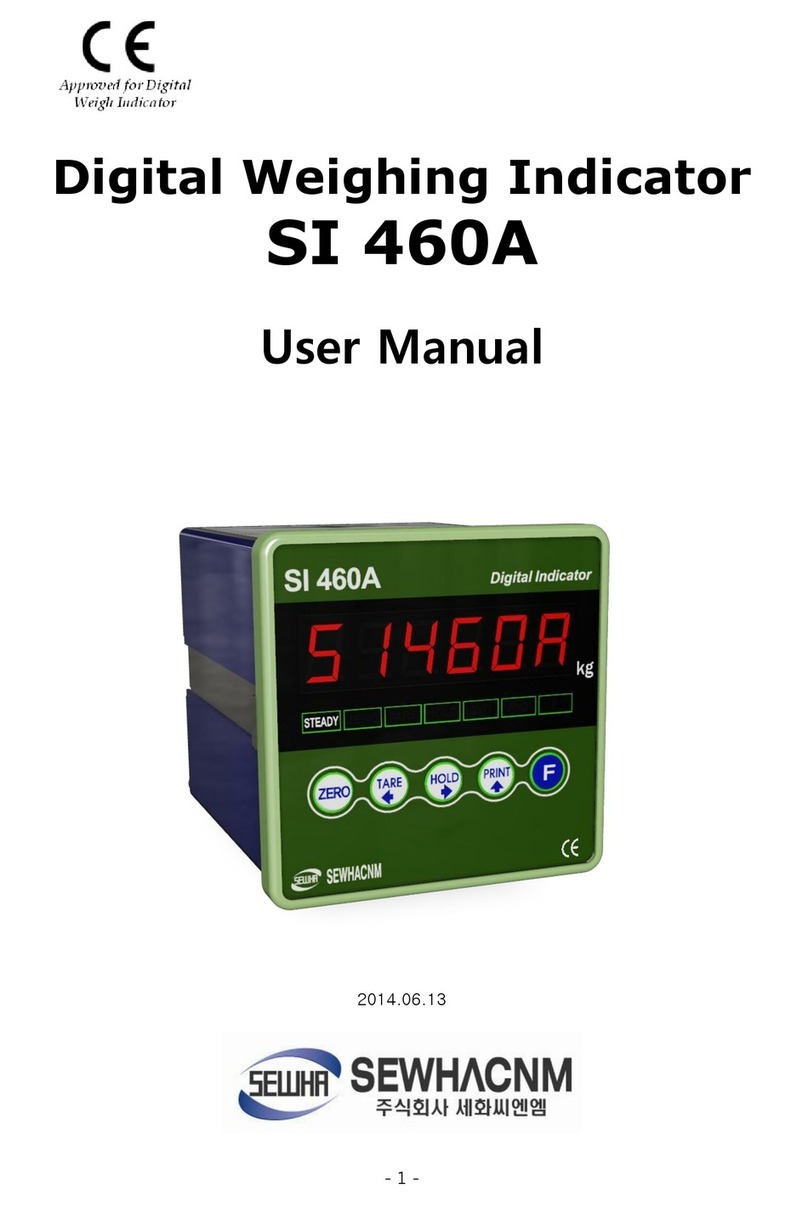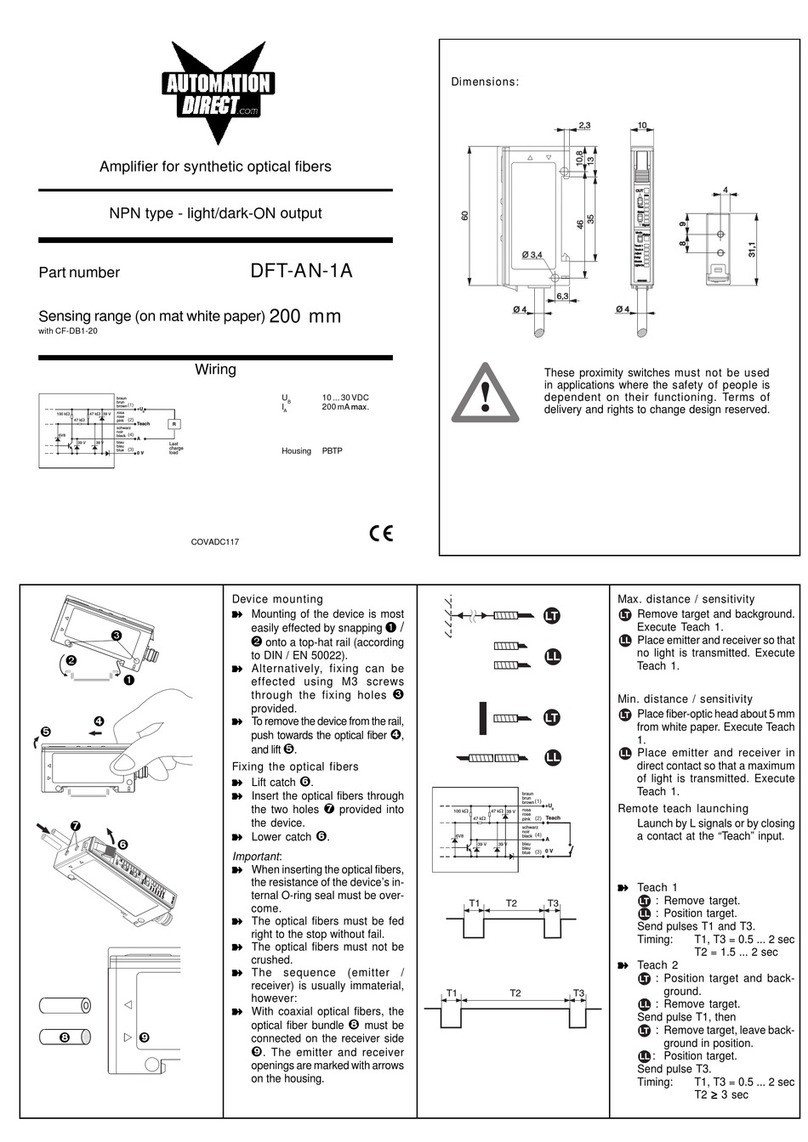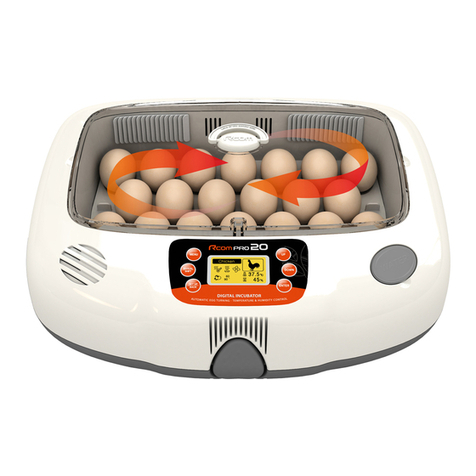Rohill TetraNode R-8070 User manual

Manual
TetraNode Base Station System Manual

Correct Disposal of This Product
(Waste Electrical & Electronic Equipment)
(Applicable in the European Union and countries with
separated waste collection systems).
This marking shown on the product or its literature indicates that it should not be
disposed of with household waste at the end of its working life.
To promote the sustainable reuse of material resources and to prevent possible
harm to the environment or human health from uncontrolled waste disposal,
please separate this from other types of wastes and recycle it responsibly.
Users should contact either the retailer where they purchased this product, or their
local government office, for details of where and how they can send this item for
environmentally safe recycling.
Business users should contact their supplier and check the terms and conditions
of the purchase contract. This product should not be mixed with other commercial
wastes for disposal.
© Copyright 2009-10, Rohill Technologies B.V.
Issue 1.0, August 2010 This version supersedes all previous versions. Please check you have
the latest version before continuing.
Information in this manual is subject to change without notice and does not represent a
commitment on the part of the manufacturer. This manual is copyrighted; it may not, in whole
or in part, be copied, photocopied, translated, or reduced to any electronic medium or
machine readable form without prior consent in writing from Rohill Technologies B.V.
Rohill Technologies B.V.
Edisonstraat 12
7903 AN Hoogeveen
The Netherlands
Telephone:+31 528 263355
Telefax:+31 528 271844
Internet:www.rohill.com
Issue 1.0, August 2010 ii

Introduction TetraNode Base Station System Manual
Warnings and Cautions
Caution:
This manual contains important information concerning installation, maintenance
and user instructions for the R-8070 based TetraNode Base Station.
Read the following pages before installing or using the equipment.
Warning:
This Equipment MUST be connected to a SAFETY EARTH.
Warning:
Do NOT operate the TetraNode Base Station without a suitable high-power 50Ω
load(s) or correctly tuned antenna/combiner system being connected.
Warning:
Do NOT touch or disconnect live (in use) antennas – RF energy can cause burns!
Warning:
A
lways ensure that the equipment is turned off before disconnecting antenna
cables.
Warning:
If working on a partially running site (half online), be careful of live power and
RF connections.
Warning:
If connecting to floating power supplies take care to minimise touch-currents.
Correctly earthed supplies are preferred over floating supplies.
Issue 1.0, August 2010 iii

Introduction TetraNode Base Station System Manual
Warning:
If dual power supplies are used for redundancy, ensure warnings are clearly
posted on the cabinet and double circuit isolators are provided.
Warning:
Do not connect equipment-room earth to the same earth used for the tower
lightning protection.
Warning:
Do NOT work on antenna cables or systems when there is any nearby/local
electrical storm activity.
Warning:
The protective earths within the TetraNode Base Station should be adequately
bonded to the electrical earth of the 19” rack cabinet and NOT to any lightning
protection system for transmitter-towers/antennas.
Warning:
The power supply for the TETRA Base Station is low-voltage, but is nonetheless
capable of delivering a hazardous energy level if short-circuited. Always
disconnect the power before working on this equipment or connected systems.
Warning:
A
ll power installations must additionally comply with all local wiring
regulations.
Warning:
Do NOT fit 3rd party equipment into this cabinet. Operating the equipment with
non-Rohill-approved components inside invalidates all warranties and may
compromise your safety!
Issue 1.0, August 2010 iv

Introduction TetraNode Base Station System Manual
Caution:
Service and /or maintenance of this equipment should only be carried out by
qualified and trained service technicians/personnel. Ensure cabinet and/or
equipment room is kept locked.
Caution:
This equipment is designed to transmit and receive RF signals for which a
license is normally required. Although the equipment complies with the
manufacturing requirements for such equipment, it is the responsibility of the
customer to obtain a suitable license and to ensure that local requirements and
compatibility issues are complied with.
Caution:
When testing a running base site, consider first the impact on users before
disconnecting equipment!
Caution:
The calibration of the crystal reference in the TBS-SYN can be detuned by
mechanical shock. References so affected must be reconnected to a GPS signal
until auto-calibration has settled and corrected any errors.
Caution:
The transmitter output and receiver input filters are qualified by Rohill for their
high performance and form part of the output filtering circuit. They must not be
replaced with alternatives nor be manually re-tuned.
Issue 1.0, August 2010 v

Introduction TetraNode Base Station System Manual
Table of Contents
1 Introduction ............................................................................................9
1.1 Scope .................................................................................................................9
1.2 Base Station System overview ...........................................................................9
1.3 S
y
stem Options .................................................................................................10
1.3.1 Number of carriers .......................................................................................10
1.3.2 Cabinet ........................................................................................................10
1.3.3 Power supply ...............................................................................................10
1.3.4 Frequency bands .........................................................................................11
1.3.5 Transmitter output power .............................................................................12
1.3.6 Transmitter combining .................................................................................12
1.3.7 Receiver Diversity ........................................................................................12
1.3.8 TBS-SYN Timing reference .........................................................................13
1.3.9 Line Interface(s) ...........................................................................................13
1.3.10 Local Control ..............................................................................................13
1.3.11 Design for Redundancy .............................................................................14
1.3.12 Environmental ............................................................................................14
2 Technical description ...........................................................................15
2.1 Transmitter .........................................................................................................15
2.2 Receivers ...........................................................................................................16
2.3 Internal power supplies ......................................................................................17
2.4 Network/other interfaces .....................................................................................17
2.5 Transceiver controller .........................................................................................18
2.5.1 Man Machine Interface (MMI) .......................................................................18
2.6 Synchronisation TBS-SYN .................................................................................18
2.7 Example configurations ......................................................................................19
2.7.1 2 carrier cabinet layout ..................................................................................21
2.7.2 4 carrier cabinet layout ..................................................................................22
2.8 Internal Cabinet Connections .............................................................................23
2.8.1 R-8070 transceiver rear panel layout ............................................................23
2.8.2 Transceiver User Interface ............................................................................27
2.8.3 Transceiver Alarms{provisional} ....................................................................29
2.8.4 R-855 TBS-SYN rear panel layout ................................................................29
2.8.5 Receiver multi-coupler/Duplexer layout ........................................................30
2.8.6 Transmitter hybrid rear panel layout .............................................................31
2.8.7 Transmitter cavity combiner layout ...............................................................31
3 Installation and configuration ................................................................33
Issue 1.0, August 2010 vi

Introduction TetraNode Base Station System Manual
3.1 Equipment room requirements ..........................................................................33
3.1.1 Equipment-room earth .................................................................................34
3.2 Installation – floor standing cabinets .................................................................34
3.2.1 Ventilation and cooling .................................................................................35
3.3 Installation – wall mounting cabinets .................................................................35
3.3.1 Ventilation and cooling .................................................................................36
3.4 Power-supply and Earthing ...............................................................................36
3.4.1 Earthing .......................................................................................................36
3.4.2 AC Power cables .........................................................................................37
3.4.3 DC Power cables .........................................................................................37
3.4.4 Power supply ...............................................................................................37
3.4.5 Un-Interruptible power / 3rd party supplies ..................................................37
3.5 Network Connections ........................................................................................38
3.5.1 V.11 bandwidth/network requirements .........................................................38
3.5.2 IP bandwidth/network requirements .............................................................38
3.6 Antenna system .................................................................................................39
3.6.1 General considerations ................................................................................39
3.6.2 Lightning protection ......................................................................................40
3.6.3 Diversity reception ........................................................................................42
3.6.4 Single Receiver antenna operation ..............................................................43
3.6.5 Dual Antenna operation ................................................................................43
3.6.6 Triple Antennas .............................................................................................44
3.6.7 Receiver Multi-Coupler, Low Noise Amplifier, Splitter ..................................45
3.6.8 Transmitter requirements ..............................................................................45
3.6.9 Passive inter-modulation considerations ......................................................45
3.6.10 Minimization of exposure to non-ionizing radiation .....................................46
3.7 Transceiver Configuration ...................................................................................50
4 Maintenance and replacement ............................................ ..................51
4.1
4.2
4.3
4.4
4.5
4.6
General ..............................................................................................................51
Maintenance policy ............................................................................................51
Maintenance ......................................................................................................51
Replacement of an R-8070 ................................................................................52
Replacement of an RMC ....................................................................................53
Replacement of a TBS-SYN ...............................................................................53
5 Troubleshooting .......................................................................................54
5.1 General ..................................................................................................................54
5.2 R-8070 Alarm messages .......................................................................................54
6 Transceiver Test Instructions (with TNX/NMT) .........................................57
Issue 1.0, August 2010 vii

Introduction TetraNode Base Station System Manual
6.1 Basic Configuration ...............................................................................................57
6.2 BER test Configuration .........................................................................................58
6.3 Setting transceiver channel and power & BER-test enable ..................................58
6.3.1 Operational status (based on NMS for R-8060!) .............................................60
6.3.2 Base station transceiver (based on NMS for R-8060!) ....................................60
6.3.3 Device (based on NMS for R-8060!) ...............................................................61
6.4 Additional notes/hints ............................................................................................62
6.5 Testing with Aeroflex 3901 {was IFR2968 - review required} ...............................62
7 Specifications ...........................................................................................65
7.1 General transceiver specifications .........................................................................65
7.2 Receiver specifications ..........................................................................................65
7.3 Transmitter specifications ......................................................................................66
8 CE Compliance .........................................................................................67
8.1 Other approvals ......................................................................................................70
8.2 RoHS ......................................................................................................................70
9 Glossary ....................................................................................................71
10 Index ........................................................................................................73
Issue 1.0, August 2010 viii

Introduction TetraNode Base Station System Manual
1 Introduction
1.1 Scope
This manual covers the R-8070 based TetraNode Base Station system and
guidelines for its installation, operation and maintenance.
This manual covers all frequency band variants and standard configurations.
Specials are not covered by this manual.
Guidance notes (for information) are written in italics.
Where specifications are given, these are for illustration. As they may be subject
to change, the definitive figures should be checked on the appropriate product data
sheet.
This Base Station System differs from its predecessor in that the R-8070
transceiver must be operated in combination with the supplied antenna combiner
system. i.e. The antenna filters, combiners and low noise amplifier are now part of
the transceiver.
However, the carrier (R-8070) can still be used as a drop-in replacement for the
successful R-8050 and R-8060 products provided care is taken to check
performance and configuration of the associated antenna combiner sub-system.
A
cronyms and definitions used can be found in the Glossary (section 9 page 71).
1.2 Base Station System overview
A
TetraNode Base Station System is designed to provide the carriers for one
TETRA base site. As standard it consists of one cabinet containing one to four
R-8070 transceivers and all the associated cabling, antenna combining,
synchronisation unit(s), optional fall-back site controller, line interfacing and
optional power supplies.
If alternative configurations are required, these can be supplied as specials, but are
beyond the scope of this document. If more than four carriers are required, two or
more cabinets can be co-located, but these would become specials if the antenna
system is shared.
A
ll Rohill Base Stations are supplied fully assembled and tested. It remains only
for antenna connections, power and system (network) connections to be made.
Delivery specific information is supplied in the “as built” documentation.
Issue 1.0, August 2010 9

TetraNode Base Station System Manual
1.3 System Options
1.3.1 Number of carriers
Note - one TETRA transceiver (carrier) supports four time-division duplex
channels. Each channel is a frequency duplex pair (simultaneous transmit and
receive). One of the four channels is always required for control. However only
one control-channel is required per site. Thus a single carrier base site would
normally support three traffic channels and a two carrier system would support
seven. Software options exist for multiple control channels (extra signalling
capacity) and also for assigning the control channel to traffic when all other slots
are occupied.
The standard number of carriers per cabinet is two or four. However cabinets can
be sub-equipped. If more than four carriers per site are required, then multiple
cabinets should be co-located.
System expansion (capacity) requirements should, if possible, also be considered
when initially specifying the cabinet type required.
1.3.2 Cabinet
The standard R-8070 Base Station System (1 to 4 carriers) is supplied in a 37.5U
high (32U internal) 19” rack unit. 600x600mm footprint with lockable front and
rear doors. Colour light grey (RAL 7047).
Rear door is ventilated (exhaust), air inlet is under rack, main air exhaust is fan-
assisted from rack top.
A
nti-vibration feet (e.g. for railway environments) are available on request.
1.3.2.1 Specials
• Ultra-Lite system. Wall mount cabinet. IP54. Air inlet in left door, outlet
from right door. Cabling entry underneath. Solid lockable doors. 1 or 2
carriers. This cabinet is normally featured in the “ultra-lite” stand-alone
small system. Colour light grey.
•Transportable system cabinet. IP64 front and rear transportation hatches,
built-in shock absorbing springs. For stationary use only. 1 to 2 carriers.
Colours dark green or blue.
1.3.3 Power supply
The standard R-8070 Base Station System is supplied from +24V (nominal) DC.
DC range is 18-36VDC negative earth. 4 carrier systems are dual-redundant
supply only.
Switching power control and backup must be provided separately.
Issue 1.0, August 2010 10

TetraNode Base Station System Manual
Options are available for:
•
•
36-58VDC (nominal -48VDC) positive earth.
A
C mains. Input range 100-240VAC 50/60Hz
Configurations can be:
•
•
•
non-redundant,
dual-redundant or
N+1 redundant.
For true redundant operation two power supply input connections are required.
Normally, each input will power half of the equipment in the rack. Some
components contain dual inputs and therefore connect to both supplies.
The alternative to dual-redundant is to use N+1 power supply configuration.
However, this is not a true redundant system as the power is internally connected
through a single common DC bus.
1.3.3.1 Specials
If customers need to provide local mains-DC or DC/DC solutions, then Rohill
must be consulted to qualify these for impedance, noise and ripple.
If solar-cell, battery back-up or other specialised solutions are required, these
should be designed to interface to one of these standard power supply solutions.
Specials must be checked by supplier for local EMC and safety approvals
compliance.
Warning:
DC power supplies must provide basic insulation from any connected charging
or AC circuit. They MUST be approved to at least IEC/EN 60950.
1.3.4 Frequency bands
The transceiver unit(s) used in the system have a fundamental tuning bandwidth of
20MHz. The transmitter and receiver can be independently tuned anywhere in this
range subject to permitted configurations [see ETSI TS 100 392-15].
This range is then constrained by the antenna filtering/combining solution to a
pair of 5MHz sub-bands (normally 10MHz offset) as defined by the customer.
For optimum performance the duplex split should be ~10MHz when below
500MHZ and 45MHz above 500MHz. Other duplex offsets are possible. Reverse
operation is possible below 500MHz.
Issue 1.0, August 2010 11

TetraNode Base Station System Manual
1.3.5 Transmitter output power
The standard maximum output power of the R-8070 transceiver (before antenna
combining) is +46dBm (approx 40W).
Higher powers are available in the 851-870MHz band as a special to allow
+44dBm (~25W) AFTER combining. However, consideration should be given to
available uplink power to avoid the situation where mobiles/portables cannot talk
back to the system.
Lower powers (1dB steps down to 33dBm (2W)) can be configured in software.
1.3.6 Transmitter combining
A
s standard, the transmitters are combined with a single hybrid (resistive)
combiner. 2:1 or 4:1 are provided as standard. 3:1 is available as a special, but has
unequal attenuation – thus output powers must be balanced accordingly.
Hybrids have no restrictions on choice of frequencies. They are supplied with a
transmit band-pass filter or duplex filter.
Multiple output configurations are available as specials.
3:1 hybrids are available as specials.
1.3.6.1 Cavity-combiner
An option is available for auto-tuning cavity combiners which will have lower
loss than a 4:1 way hybrid.
Standard minimum Tx to Tx spacing is 150kHz. Tuning range is 20MHz.
Insertion loss will decrease slightly with wider channel separation.
May also be used in conjunction with duplex filter.
See also the section on antenna considerations.
1.3.7 Receiver Diversity
A
standard, the R-8070 supports triple diversity receivers. This allows sensitivity
improvements in “cluttered” environments with a simple antenna system.
For cost reasons, unused inputs are not normally equipped with receiver multi-
couplers, so single receiver (no diversity), twin or triple-receiver working must be
specified.
Note - the R-8070 is also prepared for 6 receivers per site – for use with triple
cross-polar panel antenna systems.
See also section 3.6 Antenna system.
Issue 1.0, August 2010 12

TetraNode Base Station System Manual
1.3.8 TBS-SYN Timing reference
The R-8070 site always contains at least one timing reference. This can be either
with or without GPS receiver.
Note - Seamless handover is only supported when the system is locked to GPS.
A
second reference is required for dual-redundant operation.
The timing reference is normally powered from the R-8070 transceiver(s). Dual
power inputs are available for redundancy.
Timing references without GPS are factory calibrated against GPS. They are
designed to run for 10 years within specification.
Power and timing-reference cables are <3m to comply with EMC requirements.
Caution:
The calibration of the crystal reference in the TBS-SYN can be detuned by
mechanical shock. References so affected must be reconnected to a GPS signal
until auto-calibration has settled and corrected any errors.
1.3.9 Line Interface(s)
TetraNode Base Station systems can be connected to the back-haul network
(modems) via Ethernet (standard) or traditional line types or both. Redundant
network configurations are supported.
When used with Ethernet 10/100T, the cabinet will contain a local switch, or two
for redundancy.
The R-8070 transceivers support a V.11 interface. Two carriers can be connected
to one V.11 connection.
If other line types are required, then a TEP rack can be used with either V.11 or
Ethernet
Maximum cable length within the cabinet is < 3m to comply with EMC
requirements.
1.3.10 Local Control
Control and management of a TetraNode Base Station carrier is normally
performed remotely at the TNX (TetraNode Switch). However a local controller
option exists for fallback (local-trunking only) operation. In the TetraNode “ultra-
lite” configuration this is the only controller (switch).
Issue 1.0, August 2010 13

TetraNode Base Station System Manual
1.3.11 Design for Redundancy
Redundancy options are complex and have a significant impact on cost and
complexity. The precise requirement should be made clear when specifying the
system.
True dual-redundancy is supported by Tetra-Node. Lesser degrees of redundancy
are also possible.
When employing redundancy the usual intention is that any single component
failure will not cause a loss of service. Full performance will continue but possibly
with reduced capacity or minor performance loss.
Redundancy should also be considered when specifying antennas, power supplies,
line interfaces and the back-haul network, especially if a system must remain
operational during maintenance activities.
Network management functions, alarms and monitoring should also be considered
so that any problems can be detected and rectified quickly.
Note that redundancy will tend to hide the presence of faults!
1.3.12 Environmental
The standard version is designed for operation in a dry weather protected and
vibration-free location.
Exposure to solar radiation should be limited.
High humidity can be tolerated, but MUST be non-condensing conditions.
A
ir conditioning is only required if the performance envelope of the equipment
inside the rack would otherwise be exceeded. Temperature performance of the
carriers is defined at the air-intake of the transceiver sub-rack.
1.3.12.1 Specials
Outdoor specials require definition of the environment – consult for example
EN300 019-1 “Environmental Conditions for Telecommunications Equipment”.
Railway environments are always considered to be specials. Extra consideration
must be given to vibration and EMC requirements. Avoid track-side equipment
sites where access requires extra safety compliance.
Tunnel environments are always considered to be specials. Extra consideration
must be given to temperature build-up, dust and low-smoke/halogen-free cabling.
Marine use is an extreme version of transportable use requiring use of equipment
whist in motion and subject to vibration. Consider also power supplies and nearby
high power RF sources such as radars.
In all cases, contact your Rohill representative to confirm compliance details.
Issue 1.0, August 2010 14

TetraNode Base Station System Manual
2 Technical description
2.1 Transmitter
The R-8070 transceiver contains a high-power, high-purity, single-carrier
transmitter capable of output powers up to +46dBm (40W) before combining.
Higher powers are available as specials, e.g. to provide 25W/carrier after
combining. One to four of these carriers are provided within a single base station
cabinet. There are options on how the transceiver(s) can be connected to antennas.
The transmitter output is 18kbaud (36kbit/s) π/4DQPSK TETRA data. The output
is sharply filtered so that it (TETRA) can co-exist adjacent-channel to analogue
mobile radio systems. The carrier is amplified by a highly linear amplifier which
prevents spectral re-growth on adjacent channels.
The low-noise transmit VCO is locked to the reference signal from the TBS-SYN
and operates at 2x or 4x final frequency (band dependent). It can be used to mix
the transmitter output to any 6.25/12.5/25kHz channel offset within the band.
A
directional coupler is used to monitor output power level and also to detect i
f
the antenna connection is removed or becomes faulty.
The amplifier is cooled by a speed-controlled fan blowing air from front to rear of
the transceiver. Amplifier temperature and transmit modulator temperature can be
viewed with other transmit settings on the LCD screen. Alternatively, this
information is available remotely via the NMS.
Transmitter configuration settings are provided to the transceiver at start-up by the
TNX.
Transmit-on is indicated by a red LED next to the transceiver output connector.
Do not remove the antenna connection when the LED is illuminated.
When multiple carriers are used, they are combined after the isolators using either
a hybrid (resistive) combiner or an auto-tuned cavity (an option that is generally
only used with 4 carrier systems).
If the transmitter shares an antenna with a receiver, then it connects to the antenna
via a duplex filter instead of a band-pass filter (or auto-tune cavity).
The auto-tune cavity (option) autonomously detects the transmitter output and
uses a stepper motor to tune the cavity. This takes a couple of seconds. Once
tuned, the cavity will remain on frequency until it detects that the transmitter
output is on a different frequency. Cables inter-connecting auto-tune cavities are
critical lengths and must not be swapped or modified.
Issue 1.0, August 2010 15

TetraNode Base Station System Manual
Caution:
The transmitter output filters are qualified by Rohill for their high performance
and form part of the output filtering circuit. They must not be replaced with
alternatives or be manually re-tuned.
2.2 Receivers
The R-8070 receiver provides a combination of very low-noise (high sensitivity)
and very high dynamic range so that weak signals can still be received even in the
presence of signals from high power 3rd party systems that may be nearby or co-
located.
Diversity combining from up to three antenna inputs per cabinet is currently
supported. The R-8070 is also prepared for expansion to 6 receiver inputs for sites
requiring triple cross-polar panel antennas.
The received signals from the antenna are band-filtered by a 5MHz duplex filter
or receiver filter, then low-noise amplified and split. The split signals are then
connected to the (1..4) transceivers in the cabinet. This component is known as the
receiver multi-coupler (RMC). Unused outputs are terminated with 50ohm loads.
If diversity is used, the extra antennas are connected through further receiver
filter-multi-couplers as described above and are connected to the other receiver
inputs on each transceiver.
The received signal then enters the transceiver sub-rack where it is mixed in a
high dynamic-range mixer to an IF of 70MHz before being fed to high frequency
A
/D converters. A second IF function is then performed in software, diversity
signals are combined and the power level is measured for control of the
attenuators.
Demodulated data is streamed to the TNX where all higher layer protocols are
implemented. This means for example that, if used, air interface encryption is still
present even on links to site thus giving Rohill systems greater security than most
competitive systems.
Caution:
The receiver input filters (or duplexers) are qualified by Rohill for their high
performance and form part of the receive filtering circuit. They must not be
replaced with alternatives or be manually re-tuned.
Issue 1.0, August 2010 16

TetraNode Base Station System Manual
2.3 Internal power supplies
The standard (DC) system power-supply requirement is compatible with 24VDC
lead-acid backed-up supplies (i.e.18-36VDC).
The low current requirements of the other components in the rack are provided
from diode combined outputs from a pair of the transceiver supplies.
(Optional) Incoming AC mains is converted to DC by one or two groups of
switch-mode power supplies. One supply per transceiver. These DIN-rail mounted
supplies are passively convection cooled. They are over-current and over-voltage
protected.
Power supplies are designed to provide for worst-case loads. These are normally
experienced at highest temperatures.
Battery back-up and UPS options are supported but not normally supplied by
Rohill. Contact your local agent.
The R-8070 system supports a low power mode for use with solar-cell systems.
Warning:
If dual power supplies are used for redundancy, ensure warnings are clearly
posted on the cabinet and double circuit isolators are provided.
2.4 Network/other interfaces
The R-8070 Base Station System can employ TNSP-over-V.11 and/or IP-over-
Ethernet for connections to the remote TNX (switch) and/or local controller.
Either stream type contains the uplink and downlink signalling plus user traffic
to/from the R-8070. The R-8070 only performs lower MAC and physical layer
functions of the TETRA protocol stack.
The standard network connection to the R-8070 Base Station System is now IP
over 10/100 baseT Ethernet. Each carrier can bond to two IP addresses.
Dual networks are supported. Mixed network types are also supported.
When using a TEP rack, a range of physical line interfaces are available. For
example:
•
•
•
Issue 1.0, August 2010
E1. data
ISDN basic rate
analogue telephone interface
17

TetraNode Base Station System Manual
•
•
•
Base Station interface for local analogue base stations
E&M interface for PBX signalling
IP/Ethernet 10 Base T.
These interfaces can be used for local connection to third party equipment. See
TEP-Rack documentation for further information.
See also network considerations in the Installation section.
2.5 Transceiver controller
Within the transceiver, the heart of the system is the Transceiver Control Sub-
System (TCSS) board. The TCSS is a digital card with DSP, FPGA and
microprocessor functions which run under a real-time LINUX kernel to provide
all the sub-system control, timing and intercommunication functions required.
Several versions of software can be held in FLASH-RAM to enable synchronized
network upgrade/reversion.
The TCSS board contains all the main (non-RF) external interfaces.
2.5.1 Man Machine Interface (MMI)
Front-panel indications, basic diagnostics and control are provided by a colour
touch-screen LCD display. Status, error-codes, heart-beat and diagnostic/test
information such as RSSI and channel usage can be shown.
A
fter a time-out the display will revert to a screen-saver mode. This can be
disabled.
2.6 Synchronisation TBS-SYN
The TBS-SYN provides a high stability reference clock from a precision oven-
controlled oscillator. Once calibrated, this oscillator will stay within specification
for ten years or more.
One unit can synchronise up to 16 transceivers.
Two units can be used in dual-redundant system designs.
Connections to transceivers are made with star connected RJ-45 cables.
The TBS-SYN is designed to be powered from one or two R-80x0 series base
station transceivers.
The TBS-SYN contains one GPS receiver with a 3.3V DC power output on the
receiver MCX connector for powering a remote active antenna.
Issue 1.0, August 2010 18

TetraNode Base Station System Manual
(optional, but recommended) GPS satellite signals are used to phase lock and
auto-calibrate the reference. GPS is required continuously for system supporting
seamless handover.
Management information is available to the network via the transceiver control.
External devices can be connected to the I/O connector:
Pin
1
2
3
4
5
6
7
8
9
10
11
12
13
Signal
DOUT1
DIN1
DIN2
DIN3
DIN4
DIN5
DIN6
DIN7
DIN8
DIN9
DIN10
A
DIN1
A
DIN2
Description
Reserved for future use
Digital input #1 (LSB)
Digital input #2
Digital input #3
Digital input #4
Digital input #5
Digital input #6
Digital input #7
Digital input #8
Digital input #9
Digital input #10 (MSB)
A
nalogue input #1
A
nalogue input #2
17
18
19
20
21
22
23
24
25
Pin
14
15
16
Signal
DOUT2
Description
Reserved for future use
WiredOR Reserved for future use
+5VPower output
(≤50mA)
A
LARM
out
SDA
SCL
GND
A
GND
GND
GND
GND
GND
Reserved for future use
I2C data
I2C clock
Digital ground
A
nalogue ground
Digital ground
Digital ground
Digital ground
Digital ground
I/O connector pin-out
Issue 1.0, August 2010 19

TetraNode Base Station System Manual
2.7 Example configurations
A
three carrier base site with triple receiver diversity could be configured as
shown in Figure 1 :
TBS-SYN
TBS-SYN
dc
PSU
dc
R-8070
R-8070
R-8070
dc
1..3
dc
PSU
PSU
1..3
1..3
Tx Combining/
Rx LNA-Splitters
Ethernet/
V.11
Backhaul
network
Fall-back
site controller
Remote
TNX
Ethernet/
V.11
Figure 1, Internal Wiring diagram of the R-8070 Base Station
The R-8070 transceivers are each supplied from their own AC/DC PSU.
Dual timing references (TBS-SYN) with GPS receivers are star connected to the
transceivers. Power for each of the TBS-SYNs is provided from two connections
to different R-8070s.
A
remote TNX connection is shown (the TNX will be local in single site systems)
plus connection to a fall-back site controller (reduced functionality switch). Not
shown is the IP switch(es) which will star-connect the transceivers and the TNX.
If the Ethernet connection is redundant, then there will be a second switch also
star connected to the same items.
The antenna combining shelf will contain three modules:- a duplex filter with
LNA-splitter and two receive filters with LNA-splitters. The two receive inputs
NOT shared with Tx have filters to maintain the required Tx-Rx isolation.
The output from each LNA-splitter is star-connected to each of the R-8070
transceivers. The unused (4th) output on each splitter will be terminated with a
50Ώload
The three transmitters would be combined with a 4:1 hybrid. This hybrid then
connects to the duplex filter. The unused port will be terminated. 3:1 hybrids are
available only as specials.
Issue 1.0, August 2010 20
Table of contents

